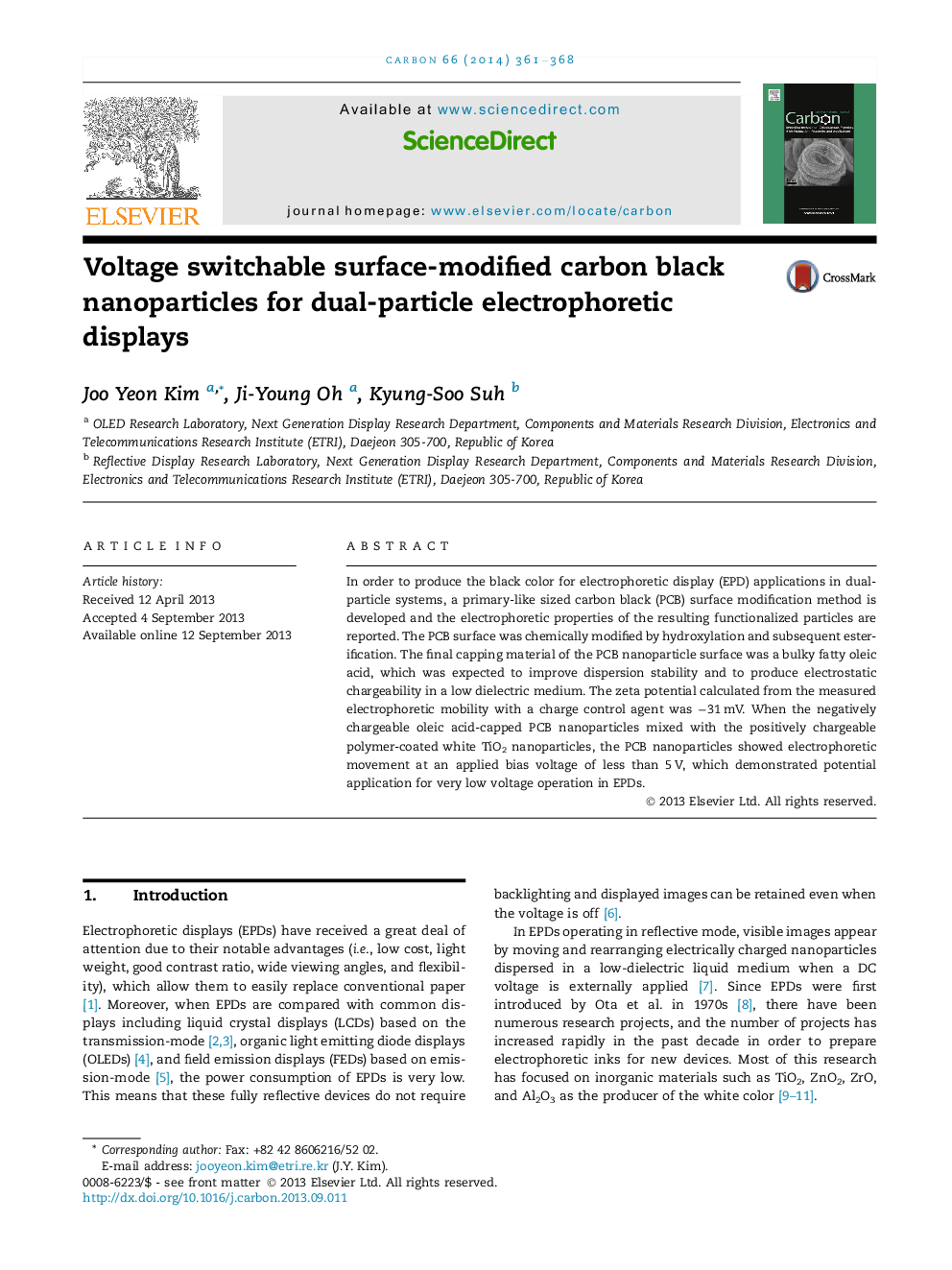| Article ID | Journal | Published Year | Pages | File Type |
|---|---|---|---|---|
| 7855491 | Carbon | 2014 | 8 Pages |
Abstract
In order to produce the black color for electrophoretic display (EPD) applications in dual-particle systems, a primary-like sized carbon black (PCB) surface modification method is developed and the electrophoretic properties of the resulting functionalized particles are reported. The PCB surface was chemically modified by hydroxylation and subsequent esterification. The final capping material of the PCB nanoparticle surface was a bulky fatty oleic acid, which was expected to improve dispersion stability and to produce electrostatic chargeability in a low dielectric medium. The zeta potential calculated from the measured electrophoretic mobility with a charge control agent was â31Â mV. When the negatively chargeable oleic acid-capped PCB nanoparticles mixed with the positively chargeable polymer-coated white TiO2 nanoparticles, the PCB nanoparticles showed electrophoretic movement at an applied bias voltage of less than 5Â V, which demonstrated potential application for very low voltage operation in EPDs.
Related Topics
Physical Sciences and Engineering
Energy
Energy (General)
Authors
Joo Yeon Kim, Ji-Young Oh, Kyung-Soo Suh,
